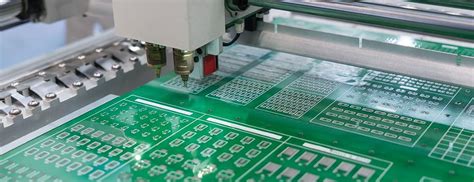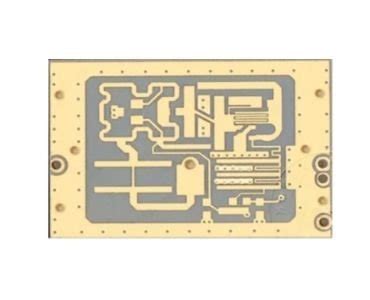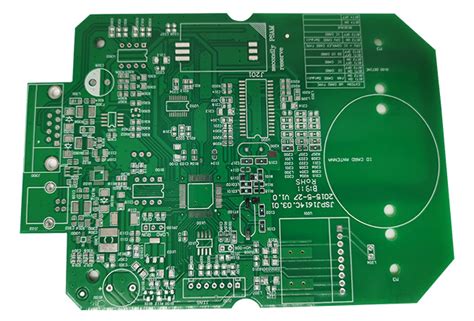Flex pcb bend radius
Understanding Flex PCB Bend Radius: Key Considerations for Design
In the realm of modern electronics, the design and implementation of flexible printed circuit boards (PCBs) have become increasingly significant. These innovative components offer a myriad of advantages, including reduced weight, space savings, and enhanced durability. However, one critical aspect that designers must consider when working with flex PCBs is the bend radius. Understanding the bend radius is essential for ensuring the reliability and longevity of the circuit, as well as for optimizing its performance in various applications.
The bend radius of a flex PCB refers to the minimum radius that the board can be bent without causing damage to the conductive traces or the substrate material.
This parameter is crucial because excessive bending can lead to mechanical stress, which may result in cracks, delamination, or even complete failure of the circuit. Therefore, determining the appropriate bend radius is a fundamental step in the design process, as it directly impacts the functionality and durability of the final product.
To comprehend the importance of bend radius, it is necessary to consider the materials used in the construction of flex PCBs.
Typically, these boards are made from polyimide or polyester substrates, which provide the necessary flexibility and thermal stability. However, these materials also have specific mechanical properties that dictate how much they can be bent without sustaining damage. Consequently, understanding the material properties is vital for calculating the appropriate bend radius.
Moreover, the thickness of the flex PCB plays a significant role in determining the bend radius.
Thicker boards generally require a larger bend radius to prevent damage, as they are less flexible than their thinner counterparts. Therefore, designers must carefully balance the thickness of the board with the desired bend radius to achieve optimal performance. This consideration is particularly important in applications where space is limited, and the board must be bent to fit within a confined area.
In addition to material properties and thickness, the layout of the conductive traces on the flex PCB also influences the bend radius.
Traces that run perpendicular to the bend axis are more susceptible to stress and potential damage. As a result, designers should aim to align traces parallel to the bend axis whenever possible. This alignment minimizes stress and helps maintain the integrity of the circuit during bending.
Furthermore, it is essential to consider the number of layers in a flex PCB when determining the bend radius.
Multilayer flex PCBs, while offering increased functionality, also present additional challenges in terms of bending. Each layer adds complexity and potential points of failure, necessitating a larger bend radius to ensure reliability. Designers must account for these factors to prevent issues such as layer separation or trace breakage.
In conclusion, understanding the bend radius of flex PCBs is a critical aspect of the design process that cannot be overlooked. By considering factors such as material properties, board thickness, trace layout, and the number of layers, designers can optimize the bend radius to enhance the performance and reliability of their circuits. As flexible electronics continue to evolve and find applications in diverse industries, mastering the intricacies of bend radius will remain a key consideration for engineers and designers alike.
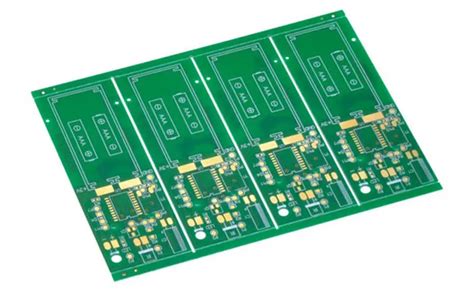
How to Calculate the Optimal Bend Radius for Flex PCBs
When designing flexible printed circuit boards (flex PCBs), one of the critical considerations is determining the optimal bend radius. This factor is crucial because it directly impacts the reliability and longevity of the flex PCB in its application. Understanding how to calculate the optimal bend radius involves a combination of material properties, design requirements, and application-specific constraints.
To begin with, the bend radius of a flex PCB is the minimum radius that the board can be bent without causing damage to the conductive traces or the substrate.
This parameter is essential in applications where the PCB must conform to a specific shape or fit into a compact space. The bend radius is typically expressed as a multiple of the thickness of the flex PCB. For instance, a common guideline is to maintain a bend radius of at least ten times the thickness of the flex PCB to ensure durability and performance.
The calculation of the optimal bend radius starts with understanding the material properties of the flex PCB.
The substrate material, often polyimide, has inherent flexibility, but its limits must be respected to prevent cracking or delamination. Additionally, the copper traces on the flex PCB can be prone to fatigue if bent too sharply. Therefore, the thickness of both the substrate and the copper layers must be considered. A thicker board will naturally require a larger bend radius to avoid stress concentration that could lead to failure.
Moreover, the design requirements of the flex PCB play a significant role in determining the bend radius.
For example, if the flex PCB is intended to be bent frequently, as in dynamic applications, a larger bend radius is advisable to reduce the risk of mechanical fatigue. Conversely, in static applications where the board is bent once during installation and remains in that position, a smaller bend radius might be acceptable. However, even in static applications, it is prudent to err on the side of caution to account for any unforeseen stresses that might occur during the product’s lifecycle.
In addition to material properties and design requirements, application-specific constraints must also be considered.
The environment in which the flex PCB will operate can influence the optimal bend radius. For instance, exposure to extreme temperatures or corrosive substances can exacerbate material fatigue, necessitating a larger bend radius. Furthermore, the presence of additional components or connectors on the flex PCB can impose physical limitations on how tightly the board can be bent.
To calculate the optimal bend radius, designers often rely on industry standards and guidelines, such as those provided by the IPC (Association Connecting Electronics Industries).
These standards offer valuable insights into the minimum bend radius for various materials and thicknesses, serving as a starting point for design considerations. However, it is essential to tailor these guidelines to the specific application and perform thorough testing to validate the chosen bend radius.
In conclusion, calculating the optimal bend radius for flex PCBs is a multifaceted process that requires careful consideration of material properties, design requirements, and application-specific constraints. By adhering to industry standards and conducting rigorous testing, designers can ensure that their flex PCBs achieve the desired balance between flexibility and reliability, ultimately leading to successful implementation in their intended applications.
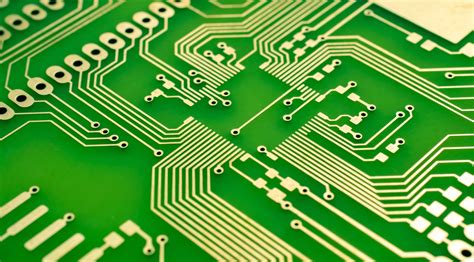
Common Mistakes in Flex PCB Bend Radius and How to Avoid Them
In the realm of flexible printed circuit boards (PCBs), understanding the intricacies of bend radius is crucial for ensuring both functionality and longevity. A common mistake in the design and implementation of flex PCBs is the miscalculation or disregard of the appropriate bend radius. This oversight can lead to a host of issues, including mechanical failure, signal integrity problems, and increased production costs. Therefore, it is essential to comprehend the factors that influence bend radius and how to avoid common pitfalls associated with it.
To begin with, the bend radius of a flex PCB is the minimum radius that the board can be bent without causing damage.
This parameter is influenced by several factors, including the thickness of the material, the number of layers, and the type of materials used. A frequent mistake is underestimating the impact of these factors, which can result in a bend radius that is too tight. When the bend radius is too small, it can cause the copper traces to crack or delaminate, leading to circuit failure. To avoid this, designers should adhere to industry guidelines and calculate the bend radius based on the specific materials and construction of the PCB.
Moreover, another common error is neglecting to consider the dynamic versus static bending requirements of the application.
Static bending refers to a one-time or infrequent bend, while dynamic bending involves repeated flexing. Each scenario demands a different approach to bend radius. For dynamic applications, a larger bend radius is typically required to accommodate the repeated stress on the material. Failing to account for this distinction can result in premature wear and tear, ultimately compromising the reliability of the device. Therefore, it is imperative to assess the operational environment and adjust the bend radius accordingly.
In addition to these considerations, the orientation of the flex PCB during installation can also affect the bend radius.
Incorrect installation can inadvertently increase the stress on the board, leading to potential damage. For instance, bending the board against the grain of the copper traces can exacerbate stress concentrations, making it more susceptible to cracking. To mitigate this risk, designers should ensure that the board is oriented in a manner that aligns with the natural grain of the copper, thereby distributing stress more evenly across the surface.
Furthermore, it is important to incorporate adequate support structures in the design to maintain the integrity of the bend.
Reinforcements such as stiffeners or strain reliefs can help distribute mechanical stress and prevent excessive bending. Overlooking these elements can lead to localized stress points, which are prone to failure. By integrating these supports, designers can enhance the durability of the flex PCB and extend its operational lifespan.
In conclusion, avoiding common mistakes in flex PCB bend radius requires a comprehensive understanding of the factors that influence it. By carefully considering material properties, application requirements, installation orientation, and support structures, designers can optimize the bend radius to ensure the reliability and performance of the flex PCB. Through meticulous planning and adherence to best practices, the potential for mechanical failure can be significantly reduced, resulting in a more robust and efficient electronic device.

The Impact of Bend Radius on Flex PCB Performance and Longevity
In the realm of flexible printed circuit boards (PCBs), the bend radius is a critical factor that significantly influences both performance and longevity. As electronic devices continue to shrink in size while increasing in functionality, the demand for flexible PCBs has surged. These circuits offer the advantage of being able to fit into compact spaces and conform to various shapes, making them indispensable in modern electronics. However, the benefits of flexible PCBs can only be fully realized when the bend radius is carefully considered during the design and manufacturing processes.
The bend radius of a flex PCB refers to the minimum radius that the board can be bent without causing damage to the conductive traces or the substrate material.
This parameter is crucial because it directly affects the mechanical stress experienced by the board. A smaller bend radius can lead to increased stress, which may result in micro-cracks or fractures in the conductive traces. Over time, these imperfections can lead to circuit failures, compromising the reliability of the device. Therefore, understanding and optimizing the bend radius is essential for ensuring the durability and functionality of flexible PCBs.
To achieve an optimal bend radius, several factors must be taken into account.
The thickness of the flex PCB is one of the primary considerations. Thicker boards generally require a larger bend radius to prevent damage, as they are less flexible than their thinner counterparts. Additionally, the materials used in the construction of the PCB, such as the type of substrate and the copper thickness, play a significant role in determining the appropriate bend radius. For instance, polyimide substrates are commonly used in flex PCBs due to their excellent flexibility and thermal stability, allowing for smaller bend radii compared to other materials.
Moreover, the design of the circuit layout can influence the bend radius.
Traces that run perpendicular to the bend axis are more susceptible to stress and potential damage. Therefore, designers often employ techniques such as staggered or curved trace routing to minimize stress concentrations. Furthermore, incorporating strain relief features, such as fillets or teardrops at the junctions of traces and pads, can enhance the board’s ability to withstand bending without compromising its integrity.
In addition to design considerations, the manufacturing process also impacts the bend radius.
Proper handling and processing techniques are essential to prevent damage during fabrication. For example, ensuring that the flex PCB is not subjected to excessive tension or compression during assembly can help maintain its structural integrity. Additionally, post-manufacturing testing, such as dynamic flex testing, can be employed to assess the board’s performance under repeated bending conditions, providing valuable insights into its long-term reliability.
In conclusion, the bend radius is a pivotal factor that affects the performance and longevity of flexible PCBs. By carefully considering the thickness, materials, and design of the board, as well as employing appropriate manufacturing techniques, it is possible to optimize the bend radius and enhance the durability of the circuit. As the demand for flexible electronics continues to grow, understanding and addressing the impact of bend radius will remain a key focus for designers and manufacturers alike, ensuring that flexible PCBs can meet the rigorous demands of modern electronic applications.

